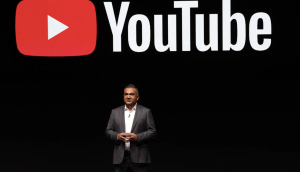Mobile phones may be a big investment space for marketers right now, but when the Media Technology Monitor (MTM) asked 4,000 Canadians what device they couldn’t live without, the majority ranked mobile phones second behind home internet access.
Phones were then followed by computers, television sets and subscription services (which ranged from OTT to cable and services such as Spotify) on MTM’s list of consumer priorities.
When examining just millennials, the results were the same except for the top-two responses; millennials would apparently rather live without internet at home than their mobile phones.
MTM composed its annual report from research conducted throughout the fall of 2017.
On OTT
With subscription services increasingly important to Canadians (54% now subscribe to at least one, according to MTM), it’s important to note that many aren’t loyal to just one brand. One in seven people who already subscribe to one OTT say they’re interested in subscribing to another next year.
And while OTTs like Netflix, Amazon and CraveTV often compete for fans with their content selections, users said their biggest priority was price. (Tied for second was the variety of content in a service’s library, up-to-date content and user interface.)
On voice
According to the MTM, four out of 10 Canadians have used some sort of voice assistant in the last year. But most of those respondents aren’t opting for newer products like the Amazon Echo or Google Home (neither parent company has released information on units sold for the devices since they launched in Canada this year).
The most popular voice assistant is still Siri, found on Apple’s mobile devices. Nearly two-thirds (64%) of voice assistant users employ Siri’s help, while 37% use “OK Google” (which is found both on Google Home devices and on Android-powered mobile phones). Third with 9% support was Microsoft’s Cortana, and Amazon’s Alexa saw a mere 2% of the share.
While there aren’t any in-market opportunities for advertising on voice yet, some buyers, such as OMD’s Nick Barbuto, have observed an appetite to jump into the industry from clients, and see potential in the medium.
On apps
Many types of apps are increasing in popularity. The MTM tracked the performance of apps outside the popular social and messaging verticals. Travel and commuting apps such as Lyft and Uber were used by 13% of respondents — but Ontarians over-indexed on these kinds of apps, with 18% of respondents using them.
Food apps, including delivery programs like Uber Eats, Foodora and Starbucks rewards, were also examined. Those were used by 17% of Canadians, but tracked higher among households with income of $100,000 a year or more (22% from this group used such apps).
On average, iPhone owners used a wider variety of apps than their Android counterparts.
On television
Most Canadians – 94% – reported still watching television within the the month prior to MTM’s polling, be it through linear TV or online viewing.
However, French Canadians reported a stronger-than-average shift toward what MTM calls “TV My Way” — consuming TV content without subscribing to pay TV services such as cable or fibre optic, opting for services like Netflix and the various TV networks’ online properties like CTV Go.
Two years ago, 87% of French Canadian respondents subscribed to pay TV, while 5% were “TV My Way” viewers. As of the most recent study, 83% of French respondents are TV subscribers, and 9% prefer TV “their” way.
That comes despite a recent MTM survey that showed French Canadians, especially those on the younger side, are a little more loyal to traditional TV than their English counterparts.
Photo courtesy of Unsplash























